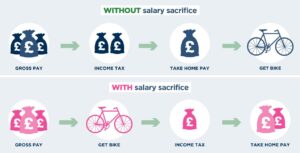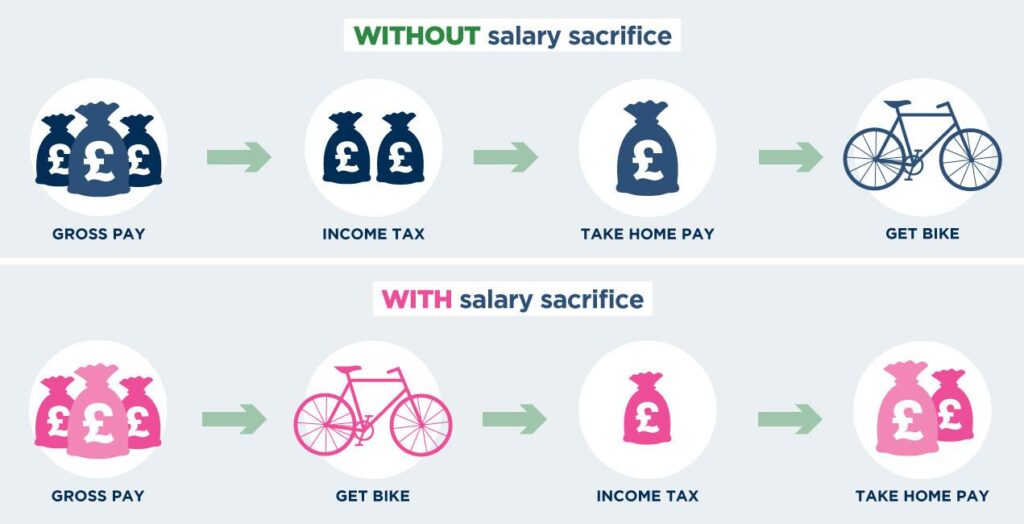In an era where sustainability and health have taken center stage, the Cycle to Work Scheme has emerged as a significant player in bolstering the UK’s cycling industry. Recent reports indicate that this tax-break initiative has funneled an impressive ┬Ż219 million into the bike market, providing both financial incentives for employees and a much-needed boost for manufacturers and retailers alike. As commuting habits evolve and concerns about urban congestion and air quality mount, the scheme not only encourages greener transportation options but also reflects a burgeoning cultural shift towards cycling as a viable and desirable mode of travel. This article delves into the mechanics and impact of the Cycle to Work Scheme, highlighting its role in revitalizing the bike market amid changing consumer dynamics.
The Impact of the Cycle to Work Scheme on the Bike Market Recovery
The Cycle to Work Scheme has emerged as a crucial lifeline for the bike industry during challenging economic times. By allowing employees to purchase bicycles and safety equipment through salary sacrifice, the initiative has drawn in over ┬Ż219 million in investment. This financial boost has helped manufacturers and retailers navigate the recovery from pandemic-related disruptions, leading to a significant upturn in sales and a resurgence of interest in cycling as a viable commuting option.
As a result, the market has seen a notable shift in consumer behavior, with many taking advantage of the tax savings to upgrade their existing bikes or purchase new models. Key trends include:
- Increased Demand for E-Bikes: The convenience and ease of electric bikes have attracted a diverse demographic of riders.
- Sustainability Focus: Consumers are increasingly prioritizing eco-friendly options, prompting brands to innovate with sustainable materials.
- Accessories Boom: There has been a rise in demand for safety gear and cycling accessories, bolstered by the scheme’s emphasis on rider safety.
The positive effect of the scheme is further illustrated in the table below, highlighting the key growth areas within the bike market over the past year.
| Market Segment | Growth Rate (%) |
|---|---|
| E-Bikes | 35% |
| Accessories | 28% |
| Traditional Bicycles | 12% |
Understanding the Financial Benefits of the Tax-Break System for Cyclists
The Cycle to Work Scheme stands out as a critical initiative, channeling a substantial ┬Ż219 million into the bike industry through a well-structured tax-break system. This financial incentive not only promotes a healthier lifestyle among employees but also significantly boosts businesses aimed at sustainable transportation. Companies that participate in this scheme can offer their workforce cost-effective access to bicycles, essentially enabling them to purchase bikes and accessories through salary sacrifice. This process effectively reduces taxable income, meaning that both employers and employees can realize considerable savings while simultaneously fostering a greener environment.
The impact of this scheme is multifaceted, benefiting various stakeholders within the cycling ecosystem. The following key points highlight its advantages:
- Increased Affordability: Employees effectively save on both the cost of the bike and taxes.
- Boost to Local Economy: Increased bike sales stimulate local retailers and manufacturers.
- Environmental Impact: Encouragement of cycling leads to reduced vehicle emissions, contributing to cleaner air.
- Health Benefits: Promotes physical fitness among the workforce, potentially lowering healthcare costs.
| Year | Estimated Savings for Employees | Impact on Bike Sales |
|---|---|---|
| 2020 | ┬Ż3,000 | ┬Ż50 million |
| 2021 | ┬Ż3,200 | ┬Ż60 million |
| 2022 | ┬Ż3,400 | ┬Ż70 million |
This innovative approach has begun to redefine commuting, making it a viable, cost-effective choice in a world increasingly focused on sustainability and health. The Cycle to Work Scheme’s supplementary benefits ensure that investment in cycling infrastructure continues to yield dividends in both economic and environmental spheres.
Recommendations for Enhancing the Scheme to Further Promote Cycling Initiatives
In order to maximize the potential of the Cycle to Work Scheme, several enhancements could be made that not only encourage greater participation but also foster a more sustainable cycling culture. Increasing the maximum value limit on bicycles eligible for the scheme would allow employees to invest in higher-quality and more durable bikes, addressing concerns of reliability and performance. Additionally, expanding the scope of categories to include electric bikes and cycling accessories such as helmets, lights, and locks could further encourage individuals to choose cycling as a primary mode of transport.
Furthermore, implementing outreach programs aimed at educating employees about the scheme and its benefits would drive awareness and participation. Introducing flexible repayment options that accommodate various salary structures can ease financial burdens, making the scheme more accessible to a wider range of employees. A centralized online platform that offers resources, tips, and even local cycling community connections would enhance user experience and encourage individuals to participate actively in biking initiatives.
To Wrap It Up
In conclusion, the Cycle to Work Scheme has emerged as a pivotal force in revitalizing the bike industry, channeling an impressive ┬Ż219 million into the market through its innovative tax-break structure. As more individuals embrace cycling as a sustainable commuting option, the scheme not only contributes to personal well-being but also addresses broader environmental concerns. With an increasing number of businesses recognizing the benefits of promoting cycling among their employees, the future of the bike market appears increasingly robust. As urban landscapes evolve and the call for greener transportation options gains momentum, initiatives like the Cycle to Work Scheme will undoubtedly continue to play a crucial role in shaping the cycling culture in the UK.











